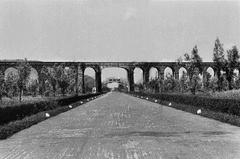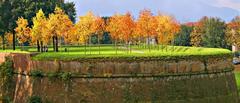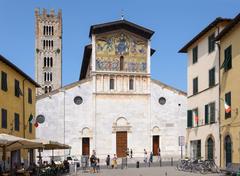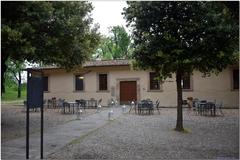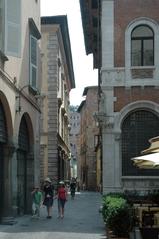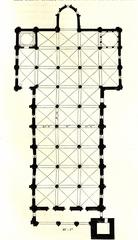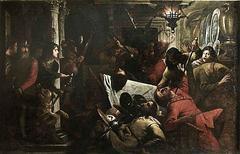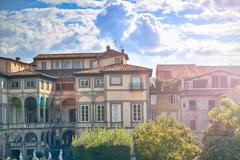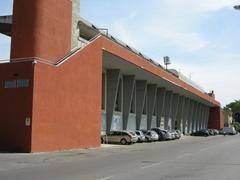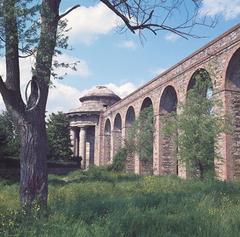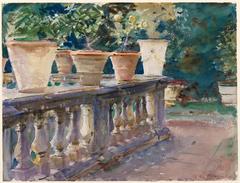Baluardo San Colombano: Complete Visitor’s Guide to Hours, Tickets, and Lucca’s Historic Bastion
Date: 14/06/2025
Introduction
Baluardo San Colombano is one of Lucca’s most iconic bastions, set along the city’s historic Renaissance walls in Tuscany, Italy. Bearing witness to centuries of military innovation, civic transformation, and cultural vibrancy, this architectural gem remains a testament to Lucca’s resilience and enduring heritage. This comprehensive guide details everything you need to know for an enriching visit—including the bastion’s history, visiting hours, ticketing, accessibility, nearby attractions, and practical tips—ensuring your trip to Lucca is both memorable and seamless.
Table of Contents
- Origins and Construction
- Defensive and Strategic Importance
- Architectural Features and Urban Integration
- From Fortress to Civic Landmark
- Cultural and Social Role
- Visiting Hours and Ticket Information
- Accessibility and Travel Tips
- Nearby Attractions
- Planning Your Visit: FAQs
- Conclusion and Essential Resources
- References
Origins and Construction
Baluardo San Colombano was constructed between the early 16th and mid-17th centuries, during an era marked by rapid advancements in military engineering. Designed under the guidance of architect Vincenzo Civitali, it formed part of the 4.2-kilometer-long circuit of Renaissance walls that replaced Lucca’s earlier medieval defenses. The bastion’s robust angular ramparts—built from pressed earth, dried plant fibers, brick, and stone—were specifically engineered to withstand cannon fire and optimize defensive artillery positions. The entire walls system, including San Colombano, stands approximately 12 meters high and up to 30 meters thick in some sections (Turismo Lucca, Lucca.com).
Defensive and Strategic Importance
Strategically situated on Lucca’s southern flank, Baluardo San Colombano was pivotal in defending against threats from Pisa and the Serchio River. Its advanced design, with sloped earthworks and overlapping fields of fire, exemplified the trace italienne (star fort) system popular in Renaissance fortification. Although the bastion and city walls were never directly attacked, their presence, combined with Lucca’s shrewd diplomacy, ensured the city’s autonomy through turbulent periods. The walls also proved invaluable during natural disasters, such as the 1812 Serchio River flood, when their gates protected the city from devastation (To Tuscany).
Architectural Features and Urban Integration
The bastion’s angular brick-and-stone facades are both functional and elegant, embodying Renaissance ideals of symmetry and utility. Originally equipped with gun emplacements and barracks, Baluardo San Colombano now forms a key node in the tree-lined promenade atop Lucca’s walls—a popular route for walking, jogging, and cycling. The bastion’s elevation offers sweeping panoramic views of the Cathedral of San Martino, the surrounding Tuscan hills, and Lucca’s historic cityscape. Below, pedestrian tunnels and ramps connect the bastion to the train station and city center, demonstrating its ongoing adaptability (turismo.lucca.it, To Tuscany).
From Fortress to Civic Landmark
By the 19th century, advancing warfare rendered Lucca’s defensive walls obsolete. Under the guidance of Maria Luisa de Borbón, the ramparts—including San Colombano—were transformed into a public park and promenade, among the earliest urban green spaces in Europe. Today, Baluardo San Colombano is cherished as a peaceful gathering place, hosting community events, festivals, and daily passeggiata (evening strolls). Restoration initiatives have preserved much of the bastion’s original structure while introducing modern amenities for residents and visitors alike (Lucca Whats On).
Cultural and Social Role
Baluardo San Colombano is a dynamic hub for culture and community in Lucca. Its open terraces, shaded lawns, and atmospheric vaulted halls provide venues for concerts, art exhibitions, historical reenactments, and seasonal festivals. During events like the Lucca Historiae Fest, the bastion is transformed by historical displays and performances, enhancing its role as a living monument to Lucca’s past and present (turismo.lucca.it, Lucca Whats On).
Visiting Hours and Ticket Information
Opening Hours
- General Access: The city walls and Baluardo San Colombano are open daily from 8:00 AM to sunset, year-round.
- Interior Areas: Some interior spaces may have limited or variable hours, especially during special events or restoration.
Tickets and Entry Fees
- Admission: Access to the city walls and bastion is free of charge.
- Special Events: Guided tours or temporary exhibitions may require tickets; check official sources for details.
- Restaurant Access: The Ristorante Caffetteria San Colombano (housed within the bastion) does not require a ticket, but reservations are recommended (ristorantesancolombanolucca.it).
Accessibility and Travel Tips
Getting There
- Location: Southern section of Lucca’s walls, near Porta San Pietro and the Lucca train station.
- Entrances: Access from the train station via well-marked pedestrian tunnels and ramps; additional entrances connect with Via delle Mura Urbane and Viale Giusti (thinklab360.com).
Accessibility
- Ramps and Pathways: Gently sloping ramps and broad pathways make the bastion accessible for most visitors, including those with wheelchairs or strollers. Some upper levels and interior chambers may have stairs.
- Recent Improvements: Restoration projects have enhanced accessibility, safety, and lighting (iltirreno.it).
Facilities
- Restrooms: Available at intervals along the promenade, though not directly at the bastion.
- Bicycle Rentals: Available near the train station and tourist centers.
- Cafés: Several cafés and bars are located close by; food stalls and temporary facilities appear during festivals.
Travel Tips
- Visit early morning or late afternoon for cooler temperatures and beautiful light.
- Wear comfortable shoes and bring water, especially in summer.
- Check the Lucca Whats On calendar for events and extended opening hours.
- Respect the site: stay on marked paths and avoid climbing on historic structures.
Nearby Attractions
- Cathedral of San Martino: A short walk from the bastion, home to remarkable art and architecture.
- Piazza Napoleone: The city’s main square, often hosting markets and concerts.
- Other Bastions: Baluardo Santa Maria and San Regolo are nearby and offer additional scenic viewpoints.
- Orto Botanico Comunale di Lucca: The city’s botanical garden, accessible via the walls.
Planning Your Visit: FAQs
Q: What are the visiting hours of Baluardo San Colombano?
A: Open from 8:00 AM until sunset, year-round. Some interior areas may have limited access during restoration or events.
Q: Is there an entrance fee?
A: No, access is free. Tickets may be required for special tours or exhibitions.
Q: Is the site wheelchair accessible?
A: Most areas are accessible via ramps, but some upper sections have stairs.
Q: Are guided tours available?
A: Yes, especially during festivals or by arrangement with local operators. Check with the city’s tourist office for availability.
Q: Can I cycle on the walls?
A: Yes, cycling is permitted on the promenade. Bike rentals are widely available.
Conclusion and Essential Resources
Baluardo San Colombano encapsulates the spirit of Lucca—combining rich history, robust architecture, and vibrant public life. Its transformation from a Renaissance military bastion to a beloved civic space invites visitors to experience Lucca’s past and present in one breathtaking location. The bastion’s free, year-round access, panoramic views, and proximity to Lucca’s cultural highlights make it an essential stop for travelers of all kinds. Enhance your visit by checking local event calendars and considering guided or self-guided tours for in-depth exploration.
For updated hours, event details, and restoration news, consult the official Lucca tourism portal or local visitor centers.
References
- Turismo Lucca
- Lucca.com: The Walls of the City of Lucca
- To Tuscany: Lucca Travel Guide
- Lucca Whats On Calendar
- Ristorante San Colombano
- ThinkLab360: Virtual Tour
- Il Tirreno: Restoration News
- GPSMyCity: Self-Guided Tours
- The Crazy Tourist: Best Things to Do in Lucca
Experience the best of Lucca’s history and culture—plan your visit to Baluardo San Colombano today, and consider downloading the Audiala app for interactive tours and insider tips. Share your experiences and follow us for the latest updates on Lucca’s historical gems!
